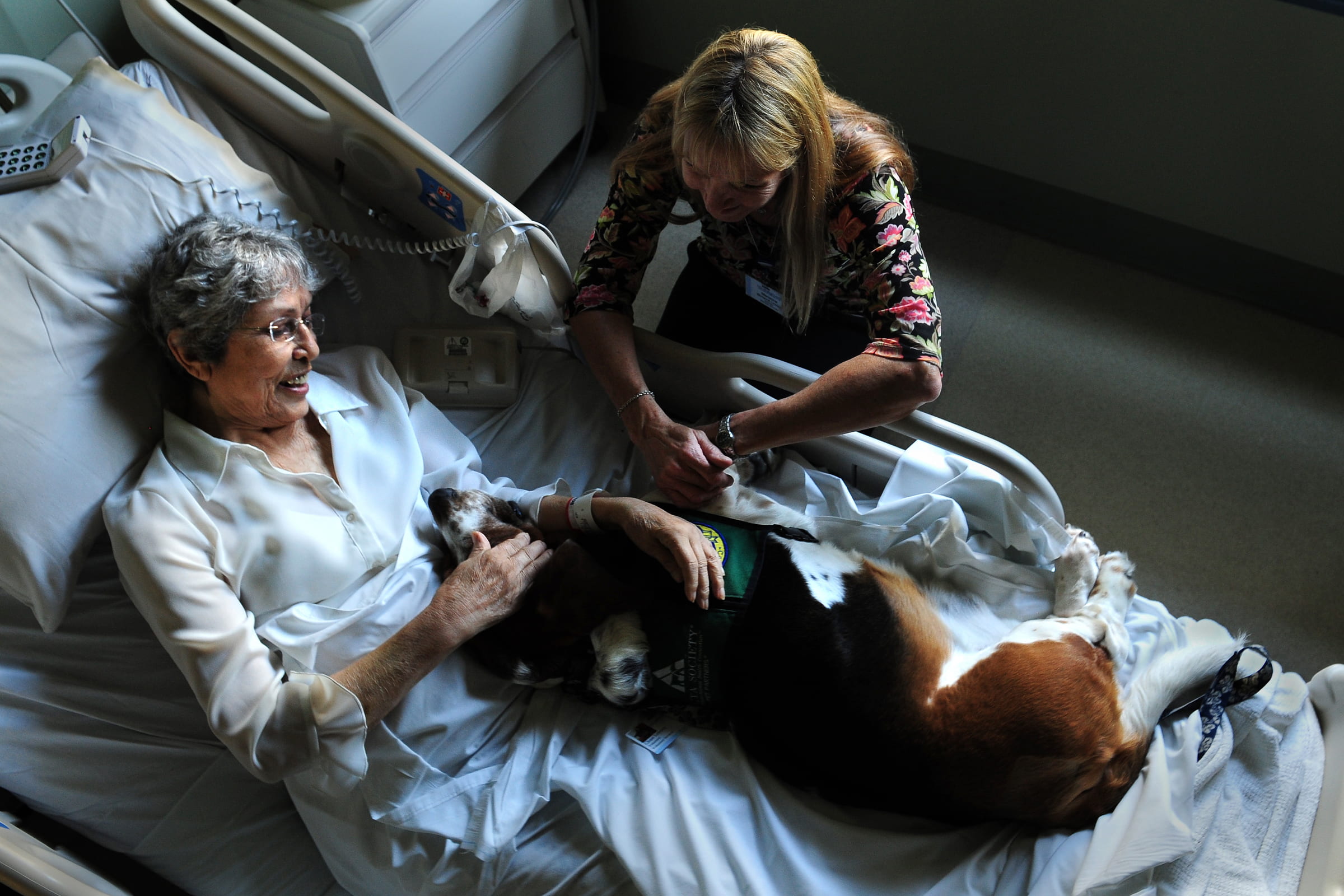Healing paws

Kahuna, a 2-year-old basset hound, parks his body next to the wheelchair of an elderly Latino woman, who takes hold of his neck. Her family talks excitedly in Spanish. It’s the first time she’s used her right hand since suffering a stroke.
For Marianne Lovejoy, it’s another example of the healing power of dogs.
Lovejoy, a registered nurse and UC Irvine Medical Center staff member, visits patients with Kahuna and her 6-year-old basset hound, Chase, through a volunteer program, Therapeutic Animal Intervention for Lifting Spirits, or TAILS. After work and on days off, she and her dogs make the rounds at the Chao Family Comprehensive Cancer Center and the acute rehabilitation unit, where patients are recovering from strokes, heart attacks or serious injuries. Just a nuzzle from a dog’s wet nose can transform them, she says.
“A lot of nurses tell me they see a big difference in patients when the dogs visit,” Lovejoy says. “Numerous studies have shown pet therapy lowers patients’ blood pressure, reduces heart rates and gets them participating in their care. The dogs get them out of bed and moving and taking their medication. Most importantly, they take their minds off being sick.”
Droopy-eyed and floppy-eared, the basset hounds have mellow temperaments ideal for pet therapy (they’re certified by pet therapy organizations and the American Kennel Club’s Canine Good Citizen Program).
“They know when to be calm and quiet around a patient. I trust them 100 percent,” Lovejoy says. “Chase will lie down with a cancer patient, and it’s like he knows what he has to do. He just stays there quietly. It’s his favorite job.
“We visited a hospice patient during the last couple hours of her life. Chase got on the bed with her, and she started breathing easier. That’s when her family members realized she was conscious and could hear them.”
In hospital corridors, Chase and Kahuna often will roll onto their backs in hopes that passersby will rub their bellies; pet therapy alleviates staff stress too. The younger, more active Kahuna is still learning the ropes and occasionally must be reminded not to “kiss” patients — who consent to the visits in advance — on the mouth.
“We had a patient with a spinal cord injury from a gunshot wound who didn’t want anything to do with anyone,” Lovejoy says. “The minute I brought the dogs in, he started talking. It turned out he had four dogs. He chatted with me for 45 minutes. His nurse said it was a turning point in his recovery. Pet therapy can open the doors of communication.
“Whenever I’m with a patient, I try to find a common bond that you can build a relationship on. It helps them focus on something happy.”
Lovejoy has been lifting spirits since she was a child, when she accompanied her mother — also an avid volunteer — on visits to developmentally disabled children.
On staff at UCI for eight years, Lovejoy is now a clinical performance improvement adviser, ensuring that the medical center meets state and national patient care standards. TAILS allows her the kind of hands-on contact with patients that she misses.
“After I retire, I’ll do this full time,” she says. “It’s humbling when you can give people comfort.”
Originally published in Vol. 1, Iss. 6 ZotZine